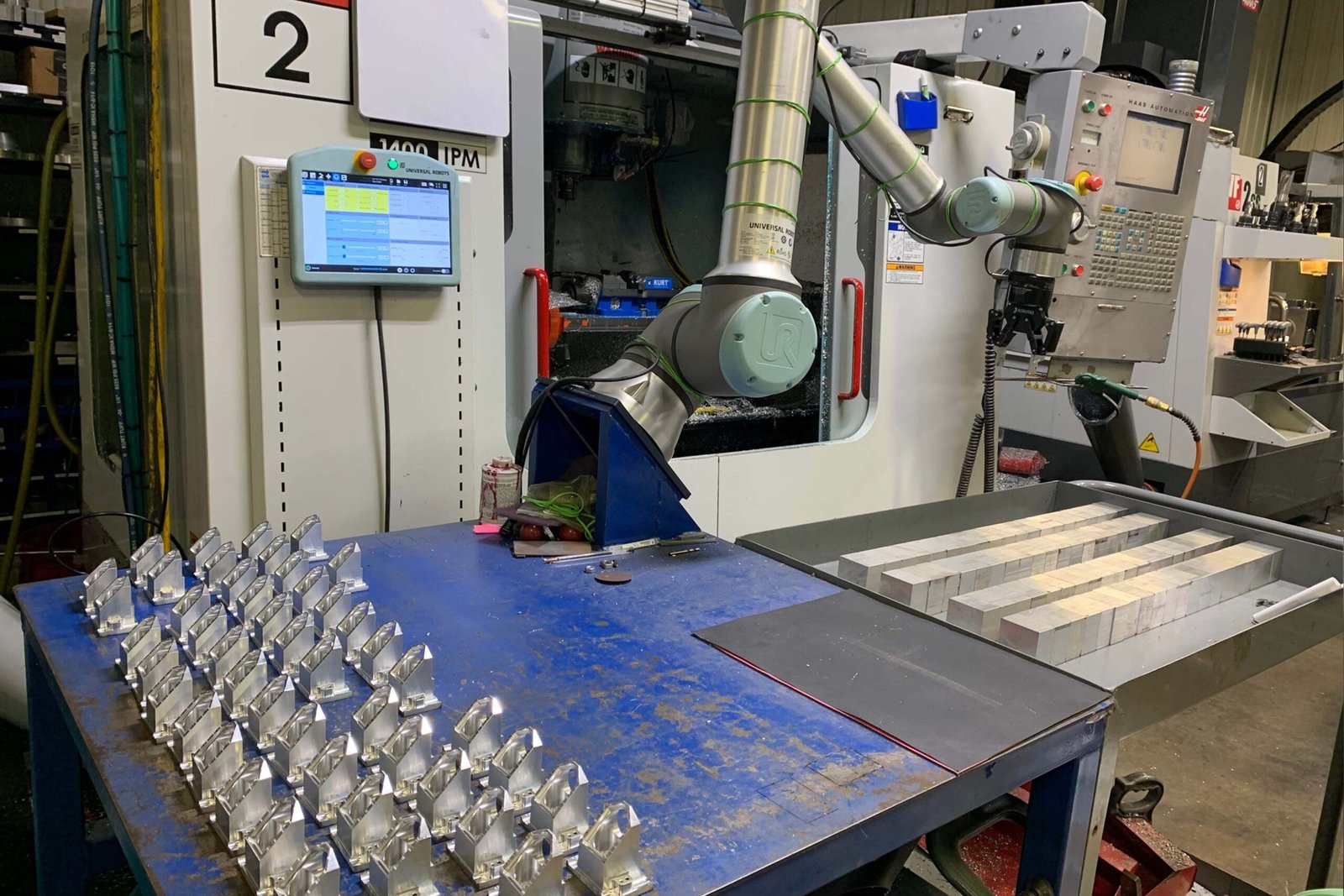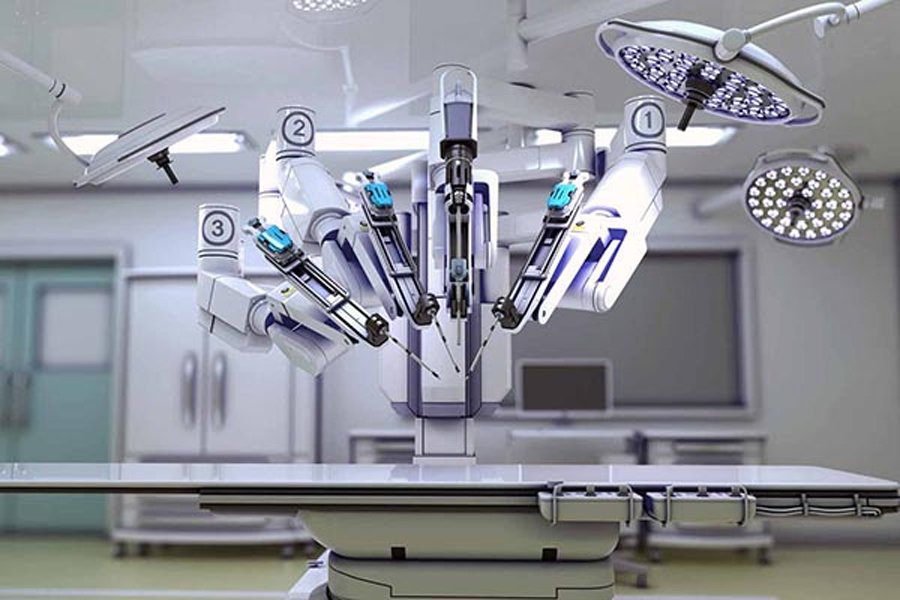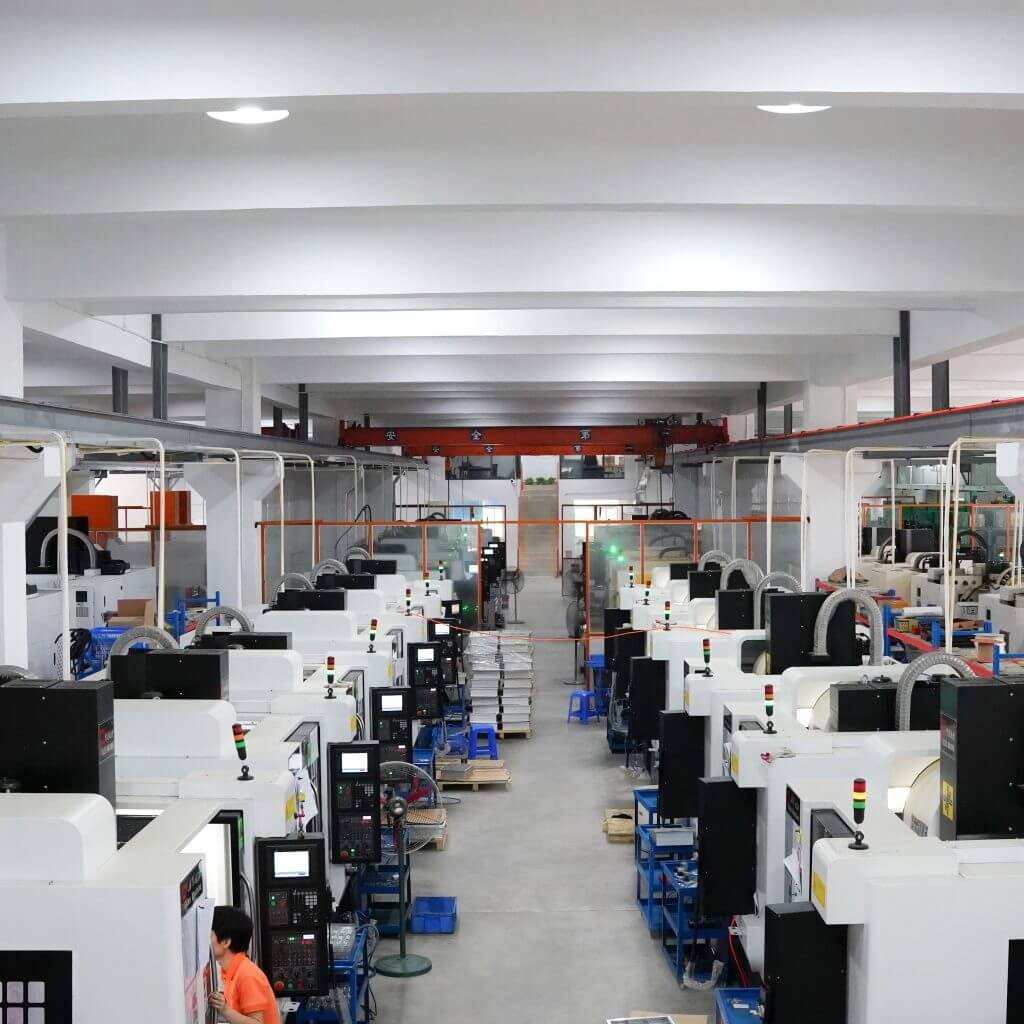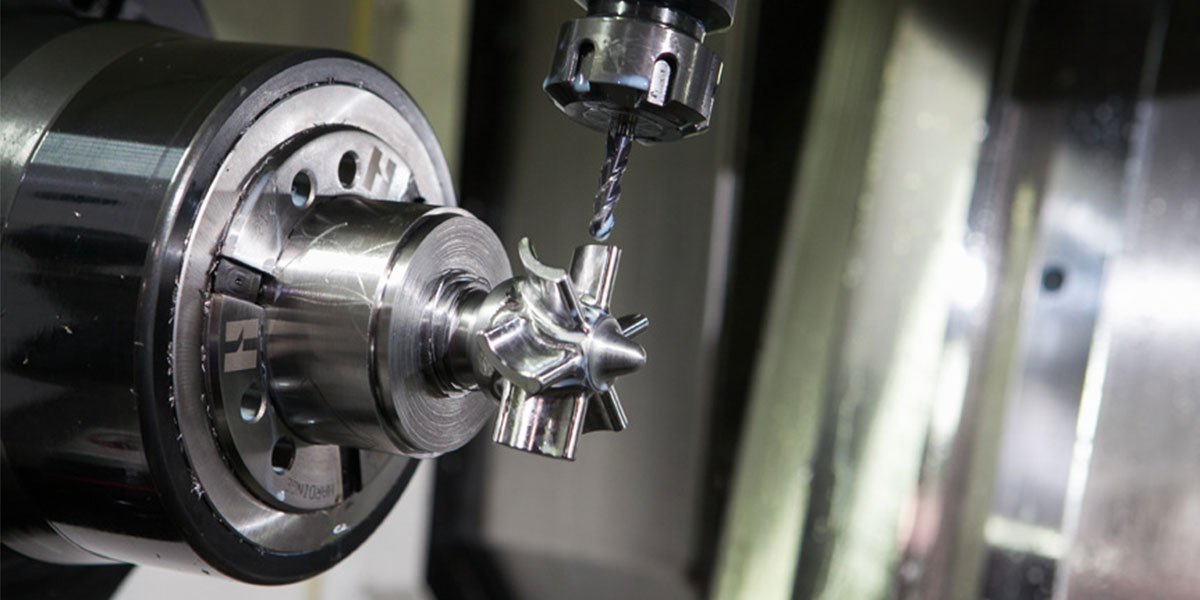Улесняваме пасивирането и електрополирането, бластиране на мъниста, анодиране, и медицински клас довършителни работи. Те се прилагат за подобряване на производителността, стерилизация, и гладкост на повърхността за грижа за пациента.
Качеството е основна грижа. Ние сме сертифицирани за ISO 9001, и всички артикули/артикули се проверяват с най-модерното измервателно оборудване. Те гарантират, че всички наши складови компоненти са направени с точност в спецификациите и разпоредбите преди пристигането им.
- У дома
- Услуги
- Индустрии
- Автоматизация
- Потребителска електроника
- Медицинска обработка на ЦПУ
- PCB фреза
- Аерокосмическа обработка
- Автомобилна обработка на ЦПУ
- CNC обработени части за велосипеди
- Обработка за отваряне на бутилки с CNC
- Обработка на разпределителния вал
- Обработка на винтове на ЦПУ
- CNC машинни резервни части
- CNC обработка на бутала
- CNC обработени подаръци
- CNC машинно маховик
- CNC машинно обработена безопасна самобръсначка
- CNC машинно обработен Fidget Spinner
- CNC машинни зарове
- CNC обработени шахматни фигури
- Галерия
- Ресурси
- За нас
Медицинска обработка на ЦПУ
Ние произвеждаме сложни медицински компоненти с прецизност на микронно ниво - постигаме толкова строги допуски, колкото ±0,002 мм.
Всяка част е произведена под ISO 9001 Сертифицирани процеси, осигуряване на биосъвместимост, последователност, и надеждност.
От хирургически инструменти до имплантируеми устройства, всяко парче е изработено със строг контрол на качеството и 100% проверка да отговарят на най-високите стандарти в здравеопазването и да поддържат животоспасяващи приложения.
Изпратете вашето запитване днес

Нашите възможности за обработка на медицински части
Tops Precision използва превъзходни материали, включително неръждаема стомана, титан, алуминий, PEEK, Делрин, и медицинска пластмаса. Те се избират въз основа на издръжливостта, устойчивост на корозия, и тяхната биосъвместимост, за да се гарантира, че те отговарят на изискванията за медицински изделия.
Нашите услуги се предлагат в широк спектър от машинни услуги, т.е., CNC обработка, прецизно струговане, микропробиване, и EDM. С такава напреднала технология, можем да генерираме сложни геометрии, микроглоби, и малки допустими отклонения, изисквани в хирургическото оборудване, импланти, и диагностична апаратура.
Нашите превъзходни услуги за бързо създаване на прототипи за медицински части
Нашето прототипиране се извършва бързо и точно върху медицински части, за да ви позволи да тествате и подобрите дизайна преди пълно производство. Разполагаме с екип, който може да се справи със сложно оборудване за производство на сложни дизайни на части според спецификациите на вашия проект.
Възможно е да се създадат прототипи, съвместими с медицинска употреба, като лек титан, здрава неръждаема стомана, и висококачествени полимери. Отделните парчета се изрязват и обработват според спецификациите на необходимия размер и служат за определена цел.
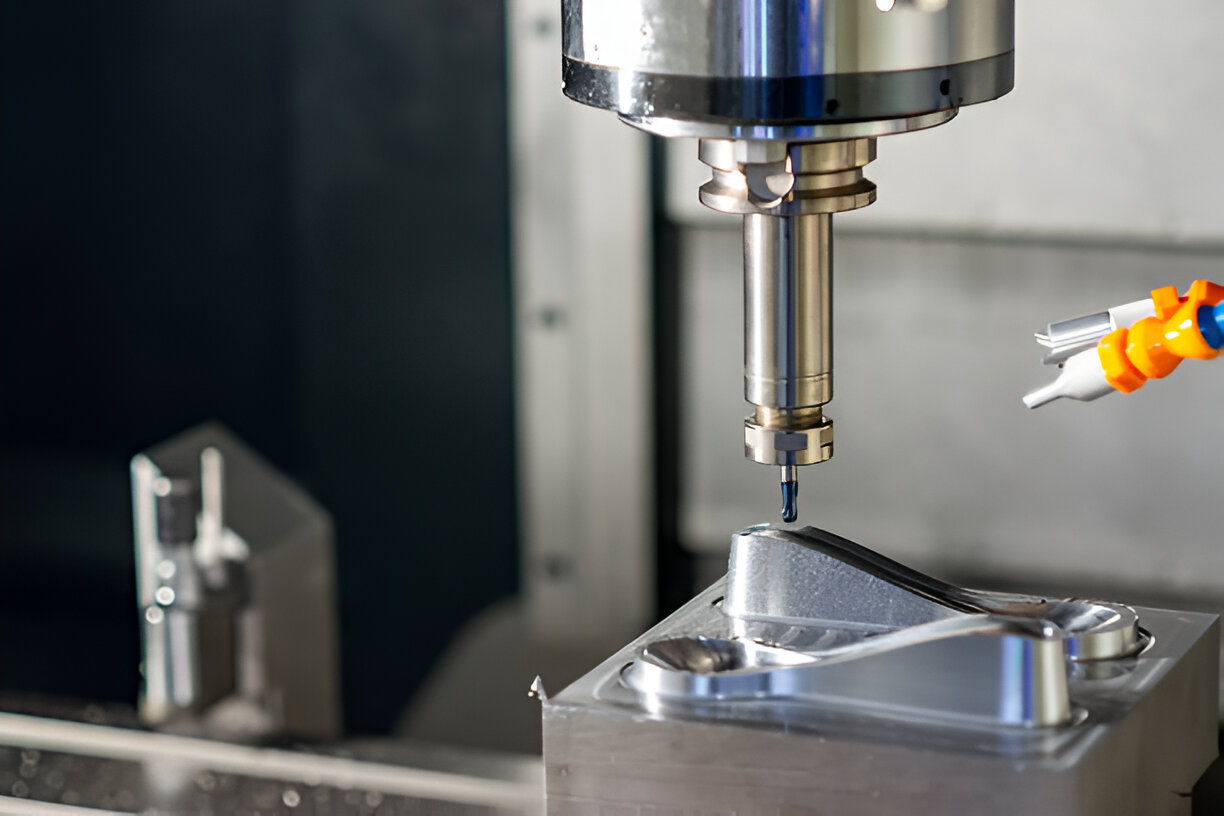
Ние предлагаме подобряващи производителността и естетични покрития на повърхностите, като гладко покритие и защитно покритие. Това позволява прототипите да бъдат изпробвани в реални условия.
Под щателен процес на всичките му етапи, ние гарантираме, че вашите прототипи са последователни и точни. Те идват готови за тестване в практически условия.
Изпратете вашето запитване днес
Нашите техники за производство на медицински изделия
Ние правим медицински изделия с грижа и прецизност. Всяка част е направена да отговаря на строги стандарти за безопасност и качество.
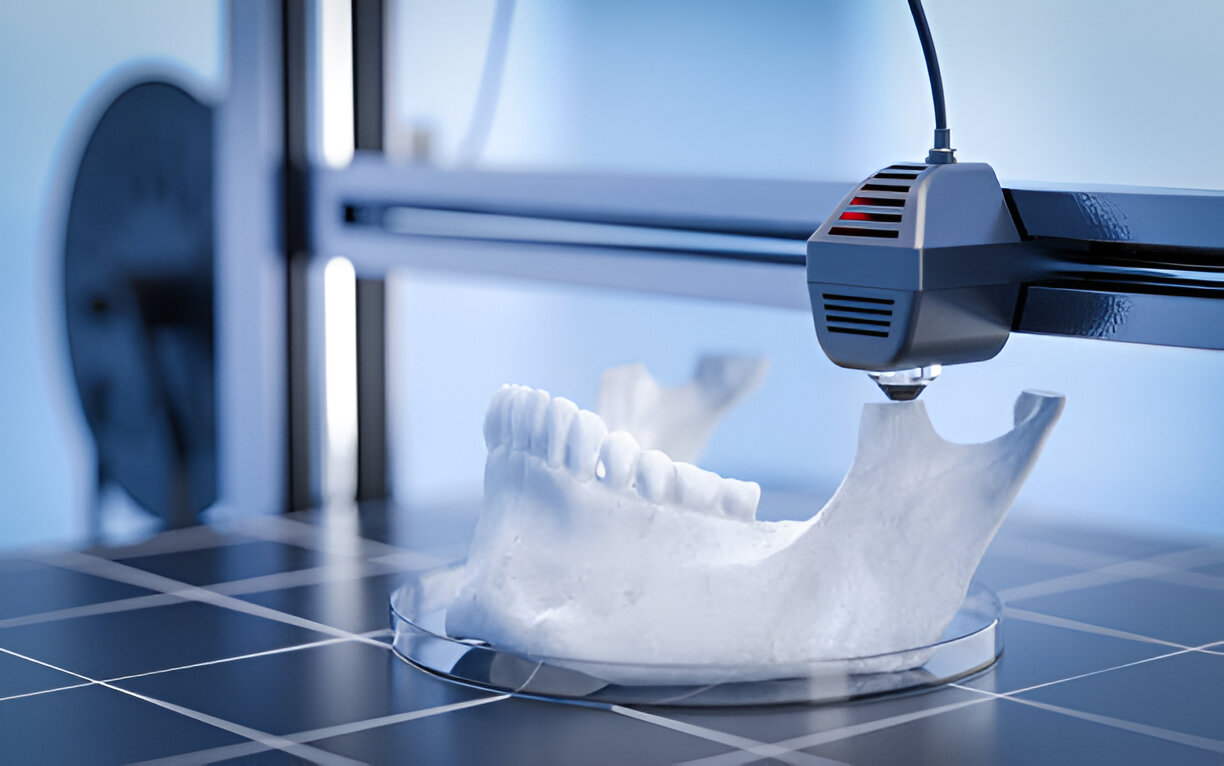
3D Печат
Започваме с преобразуване на вашите CAD проекти в прецизни 3D модели. Използване на медицински полимери или метални прахове, ние изграждаме компоненти слой по слой с висока резолюция.
След печат, всяка част се подлага на почистване, премахване на поддръжка, изглаждане на повърхността, и проверка на размерите, за да се гарантира, че отговаря на проектните спецификации. Този процес е идеален за бързо създаване на прототипи, функционално тестване, и сложни геометрии. Тъй като тези детайли и характеристики са трудни за обработка.
- Точност до ±0,01 mm за детайлни части
- Спестяващо разходи прототипиране
- Бърза изработка само за няколко дни
- Може лесно да прави сложни форми
CNC обработка
Ние използваме CNC фрезоване, обръщане, и микропробиване на части, които изискват най-строги допуски. Процедурата започва с правилния избор на материал, което може да включва титан, неръждаема стомана, и медицински клас пластмаси. Всяка част е обработена с изключителна прецизност, с внимание към скоростите на подаване и параметрите на рязане, за да се избегне втвърдяване при работа или повърхностни дефекти. Завършете инспекцията на мониторите, Грубост на повърхността, и механична цялост.
Ние предлагаме
- Допустимите отклонения са ±0,005 mm
- Ефективна и достъпна обработка
- Бързо изпълнение на спешни части
- Може да се справи със сложни дизайни
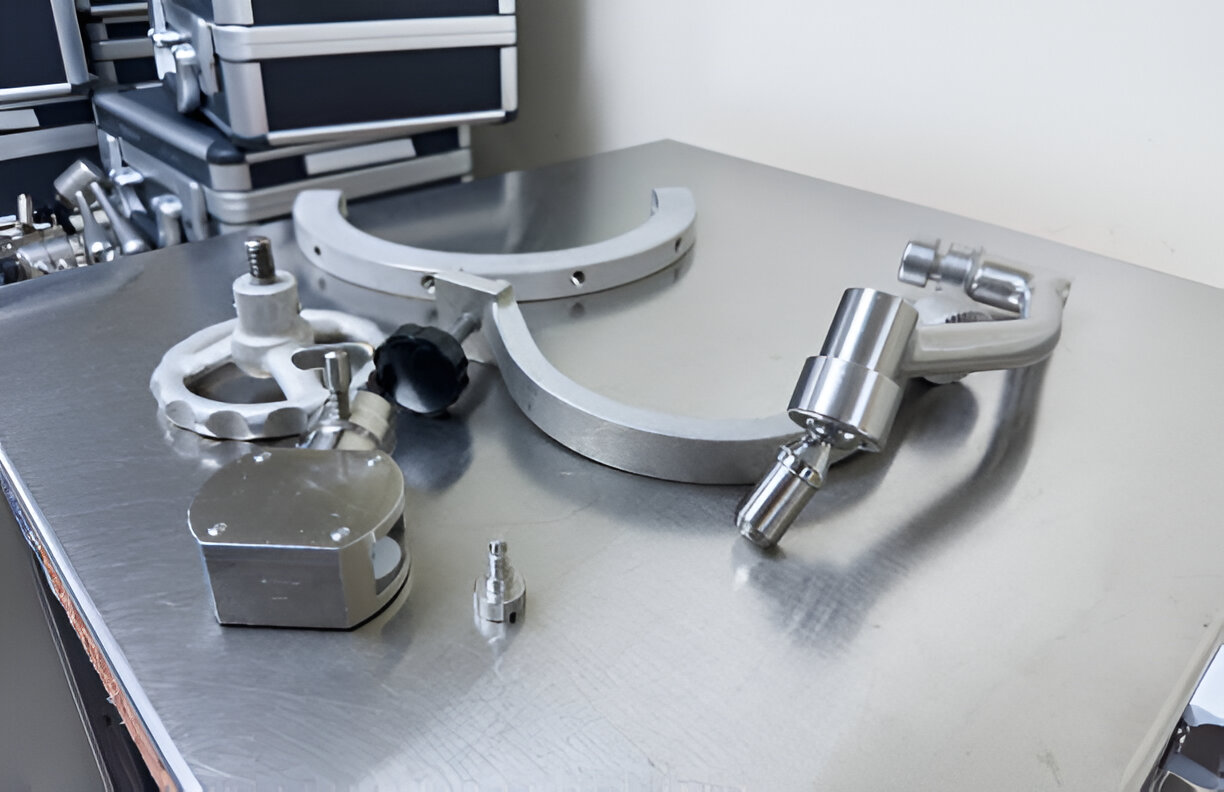
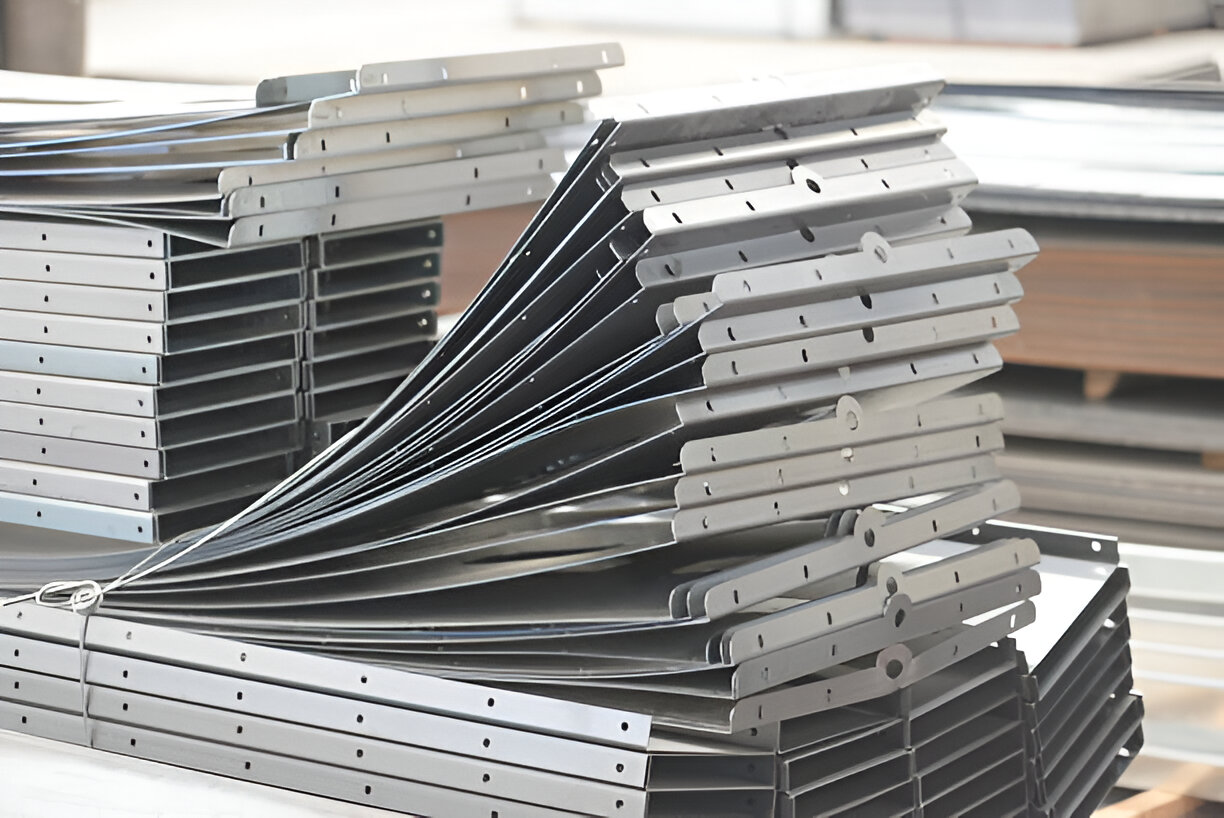
Производство на ламарина
Лазерно рязане, щамповане, и прецизно рязане на преси, огъване, и формоване на компоненти от ламарина. В зависимост от вашето приложение, ние използваме листове от медицинска неръждаема стомана или алуминий. Веднъж образувана, ръбовете са изчистени, повърхности полирани, и сглобени (където е приложимо). Конструкцията и здравината на конструкцията са потвърдени, и всеки пасва на всички. Ние предоставяме.
- Прецизно рязане, огъване, и формиране
- Малък разход на материали за по-добър контрол на разходите
- Бързо време за производство
- Гладки и чисти повърхности
Инжекционно формоване
За пластмасови компоненти с голям обем, ние създаваме прецизни форми въз основа на вашия дизайн. Медицински полимери се инжектират при контролирана температура и налягане, за да могат да бъдат направени 1000 секунди последователни части. След като се охлади, частите са подрязани, полиран, и проверени за дефекти, изкривяване, и отклонения в размерите. Готовите компоненти също могат да бъдат подложени на стерилизация и повърхностна обработка според медицинските изисквания.
- Съгласувани части за производство в голям обем
- Ниски производствени разходи
- Кратко време на цикъла за бърза доставка
- Гладки повърхности, готови за стерилизация
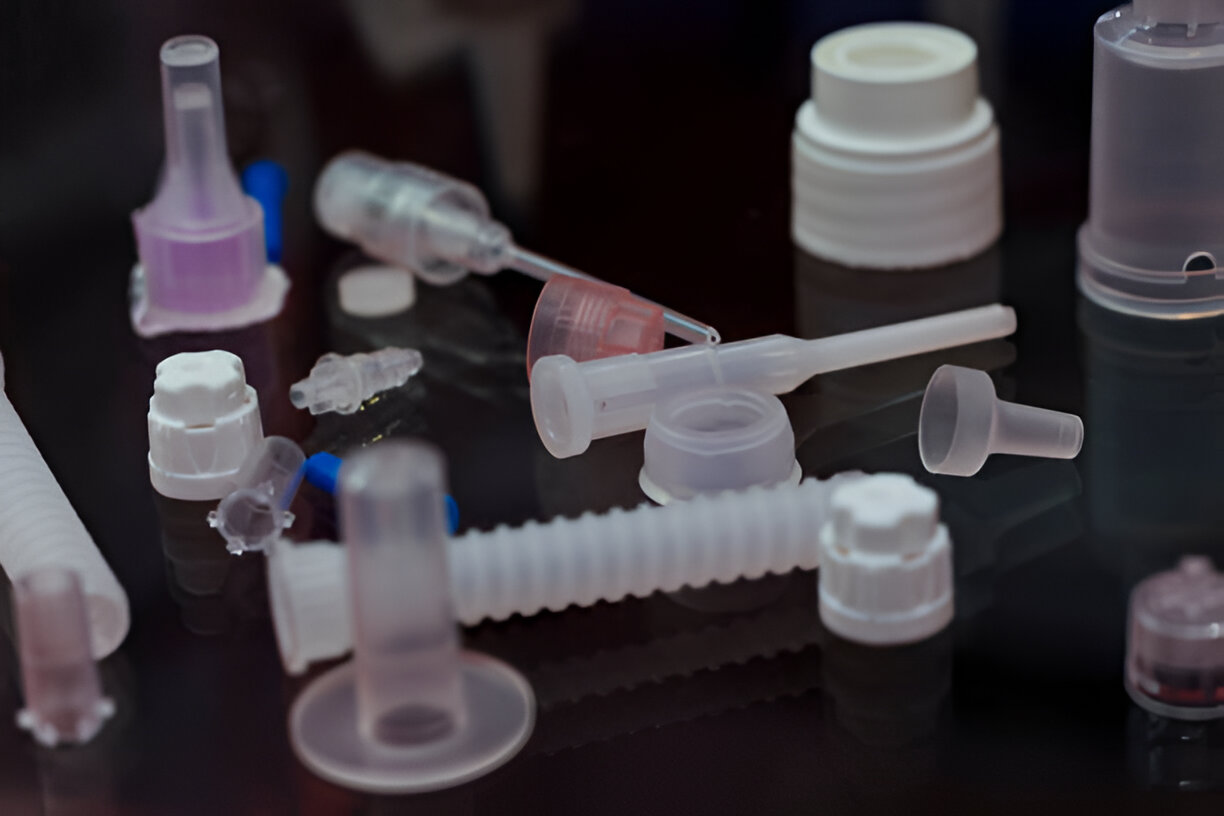
Изпратете вашето запитване днес
Защо да изберете нас за производство на медицински части
Ето фактите, как се отличаваме от другите конкуренти:
Рентабилни решения
Нашето рентабилно производство върви ръка за ръка с качествено производство на медицински компоненти. Чрез организацията на всяко действие, минимизиране на материалните отпадъци, и ефективни процеси, ние произвеждаме части, които са не само по-евтини, но и прецизни и безопасни.
Напълно персонализирани компоненти
Всеки проект носи със себе си уникални нужди. Ние произвеждаме части по ваш точен дизайн, или в еднократен прототип, или в серийно производство. Ние си сътрудничим много тясно с вас, така че частите да са с точни размери, функционални параметри, и спецификации на материалите.
Бързо и надеждно производство
Ние знаем за значението на крайните срокове в областта на медицината. Имаме щадяща операция, ефективни машини, и квалифициран персонал. Това ни позволява да предоставяме части бързо без повторения по-късно. Дори нашето оборудване от ново поколение поддържа по-сложни проекти, които се изпълняват навреме, без да се прави компромис с качеството.
Стриктен контрол на качеството
Всеки компонент преминава през няколко процеса на проверка, за да се провери дали отговаря на изискванията на ISO 13485 и ISO 9001. Повърхностно покритие, размери, и целостта на материала се проверяват. Така, всички компоненти са безопасни, издръжлив, и надеждни за използване за важни медицински цели.
Изключително прецизни и точни
Нашите допуски и гладки покрития се поддържат много строго. Това гарантира прилягане и функции на частта според изискванията. Такава висока точност е ключова в хирургическите инструменти, импланти, и диагностична апаратура.
Спазване на регулаторното спазване
Нашите процеси са синхронизирани с правилата и разпоредбите на медицинската индустрия. Имаме строги протоколи, за да сме сигурни, че частите са безопасни, надежден, и годни за използване в областта на медицината, чак до нашия избор на материал до крайната проверка.
Високи технологии и иновации
Всички наши производствени техники са усъвършенствани, като 3D печат, CNC обработка, Работа с ламарина, и леене под налягане. Това ни позволява да управляваме сложни геометрии, функционални тестови прототипи, и масово производство.
Кооперативен и приятелски настроен към клиента
Нашите производствени процеси се променят, за да отговарят на конкретните нужди на даден проект. Може да е бързо прототипиране, специализирано производство в малък обем, масово производство, или всяка комбинация между тях. Ние се грижим вашите парчета да стигнат до вас точно както ви трябват.
Изпратете вашето запитване днес
Видове медицински части, обработени за медицински приложения
Ние обработваме голямо разнообразие от медицински части за различни приложения в здравеопазването. Всеки компонент е проектиран за точност, издръжливост, и безопасност.
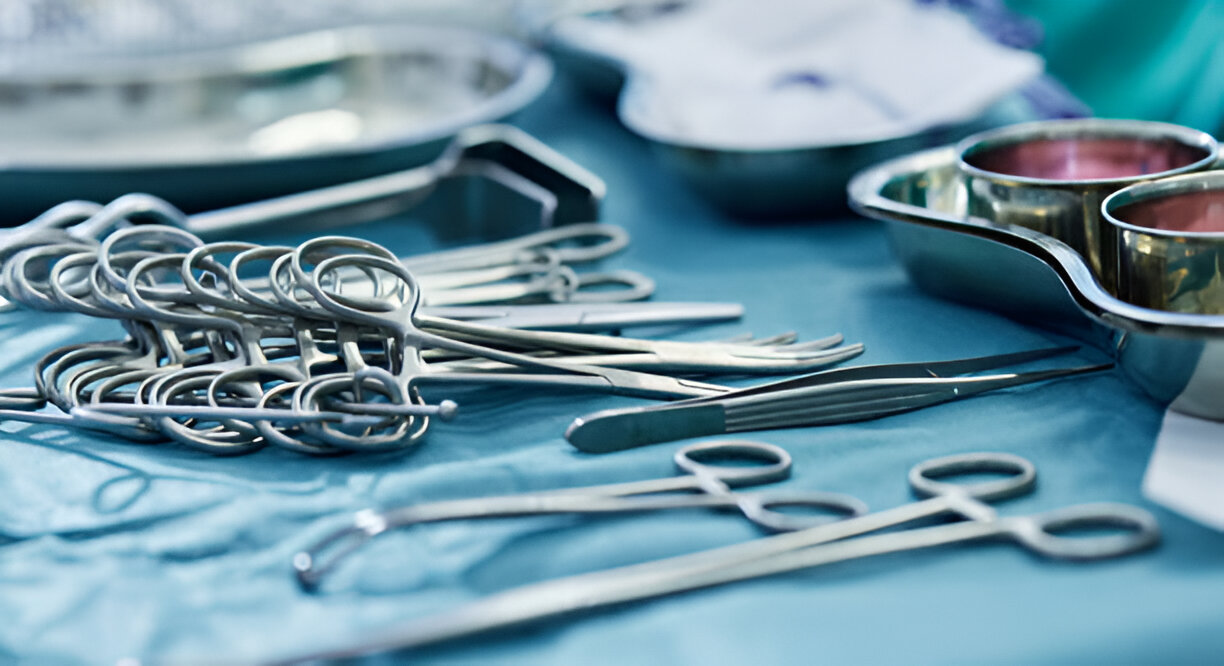
Хирургически инструменти
Произвеждаме скалпели, форцепс, скоби, и други ръчни инструменти, използвани в операциите. Тези компоненти са произведени от висококачествена неръждаема стомана, титан, за да остане издръжлив и способен да издържи на корозия. Всички инструменти са гладки, точен, и стерилизирани.
Протезиране и имплантиране
Изработваме машинно протезиране на стави, Костни плочи, винтове, и зъбни импланти. Биосъвместимостта е направена с материали като титан и медицински полимери. Индивидуалните компоненти са формовани, за да паснат и имат издръжлива производителност.
Диагностични и образни компоненти
Ние произвеждаме компоненти, използвани в рентгенови лъчи, ЯМР, и ултразвук. Те включват корпуси, скоби, и прецизни стойки. Всички части са произведени с малки допуски, за да се гарантира, че работят надеждно в чувствително оборудване.
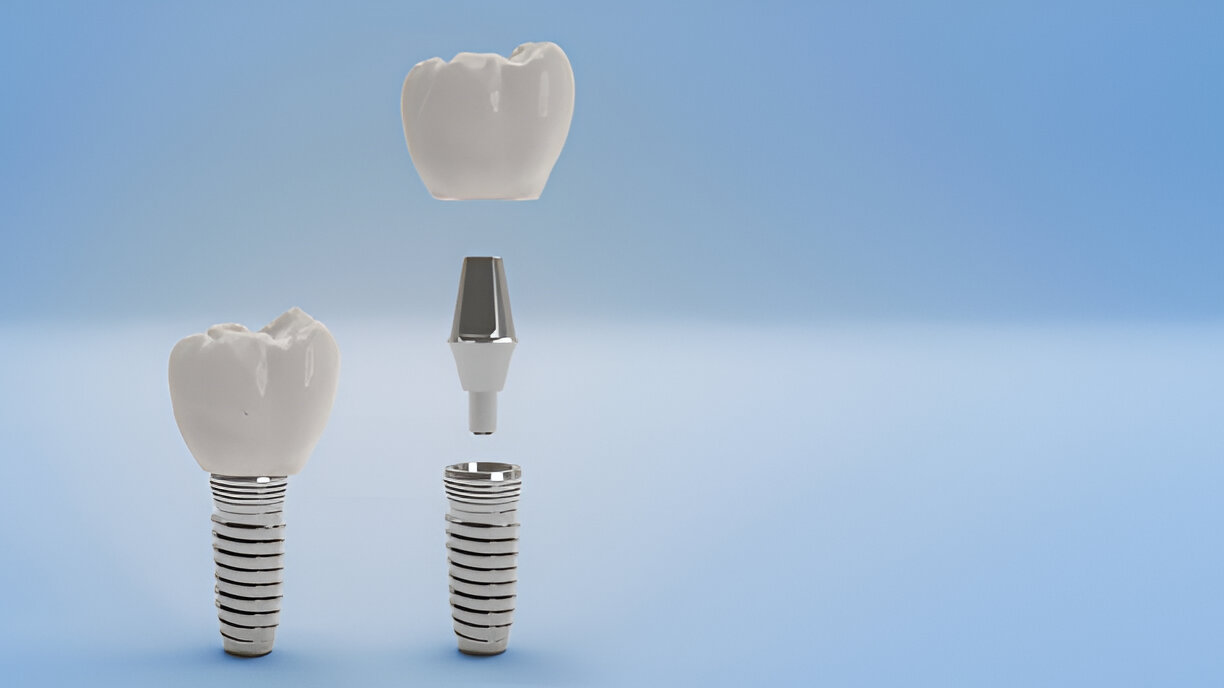
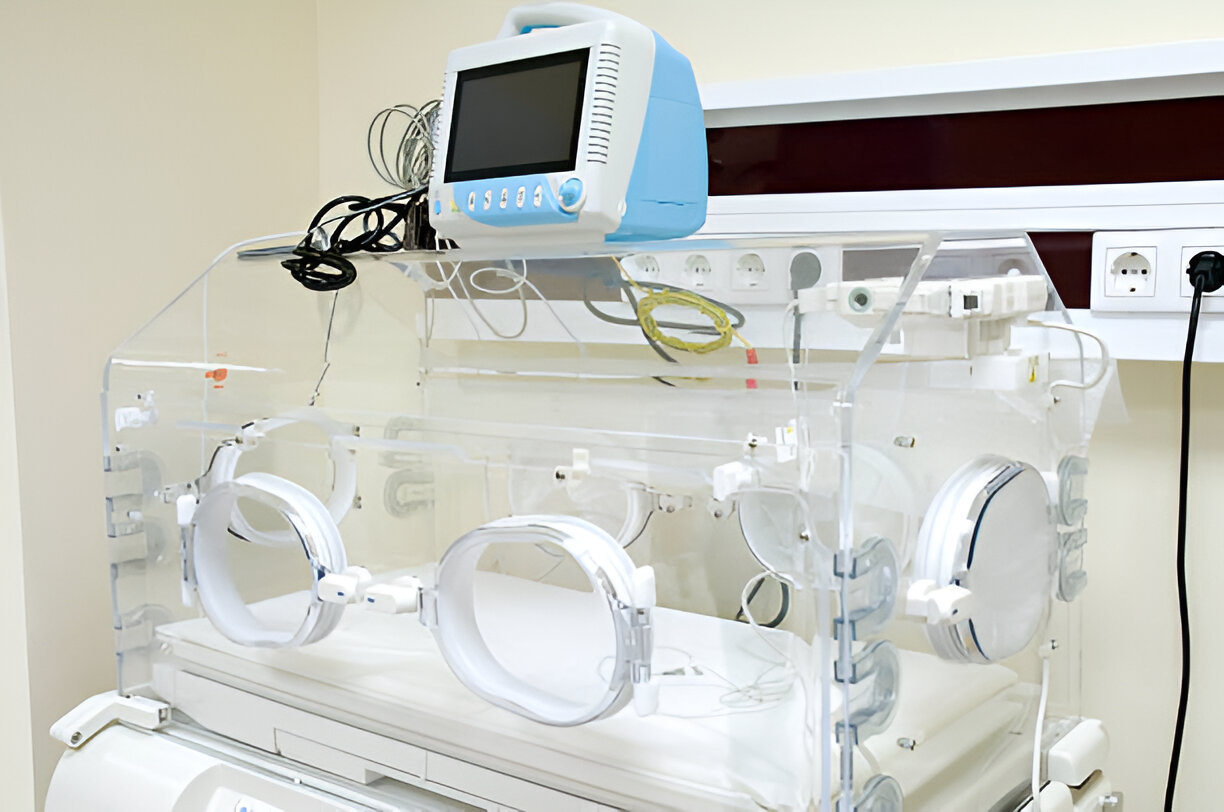
Корпуси и кутии за медицински изделия
Ние произвеждаме екраниращи защитни кутии и капаци като пейсмейкъри, инсулинови помпи, и монитори. Такива корпуси са безопасни, издръжлив, и водят до добро прилягане между вътрешните части.
Части за лабораторно оборудване
Нашите продукти са машинно обработени части от лабораторно оборудване като центрофуги, пипети, и тестови машини. Композитите са маркирани, за да работят точно, многократно, и да са химически устойчиви в лаборатории.
Постобработка за медицински прототипи & Продукти
След изработване на медицински части, добавяме довършителни работи, за да ги направим здрави, безопасно, И лесен за почистване. Видът на покритието зависи от материала и употребата.
Тип завършете | Описание | Полза |
Полиране | Изглажда повърхността | Лесен за почистване и стерилизиране |
Пасивация | Третира неръждаема стомана | Предпазва от ръжда |
Анодиране | Третира алуминий | Прави го по-здрав и издръжлив |
Бластиране на мъниста | Добавя текстура | Премахва грубите петна |
Медицински покрития | Защитен слой | Безопасен за химикали и стерилизация |
Тези покрития гарантират, че вашите части издържат по-дълго и са готови за медицинска употреба.
Изпратете вашето запитване днес
често задавани въпроси
Работим с неръждавейка, титан, алуминий, PEEK, и други медицински пластмаси. Тези материали са избрани за здравина, биосъвместимост, и устойчивост на корозия.
да, ние създаваме части според вашия точен дизайн и измервания. Това включва прототипи, малки партиди, и пълномащабно производство.
Използваме CNC обработка, 3D печат, изработка на ламарина, и леене под налягане на пластмаса. Всеки метод се избира въз основа на частта от сложността на вашия дизайн, материал, и изисквания за обем.
Всички части се проверяват на няколко етапа. Нашите услуги са в съответствие с ISO 13485 и ISO 9001 стандарти. Проверяваме размерите, повърхностно покритие, и цялост на материала, за да се гарантира, че всеки компонент е безопасен и надежден.
да, нашите прецизни работни процеси и усъвършенствано оборудване ни позволяват бързо да доставяме прототипи и производствени части. Така, получавате части, направени правилно, без компромис с точността и качеството.
Медицинският свят никога не спира да се развива. С нови иновации, които се появяват ежедневно, Едно нещо, което остава постоянно критично, е прецизност. В областта на здравеопазването, Няма място за грешки - особено когато става въпрос за инструментите, импланти, и компоненти, които влизат вътре или работят заедно с човешкото тяло. Ето къде Медицинска обработка на ЦПУ стъпки в.
ЦПУ (Компютърно цифрово управление) механична обработка не е просто друг производствен процес - това е a смяна на играта. Тя позволява на медицинските производители да произвеждат части с Невероятна точност, До микрометъра. Помислете хирургически инструменти, които се нуждаят от нулев марж за грешка, или персонализирани костни импланти, които трябва да се вписват перфектно в анатомията на пациента. С обработка на ЦПУ, Това не са само мечти - те са реалност.
Но защо CNC обработва толкова голяма работа в медицината? Отговорът се крие в ниво на контрол и повторяемост предлага. Чрез подаване на точни инструкции в компютър, Машините могат да издълбаят, изрежете, и оформете дори и най -трудните материали в безупречни части. И още по -добре, Той е супер адаптивен - можете да превключвате между проекти, Персонализирайте дизайни в движение, и мащабирайте нагоре или надолу в зависимост от търсенето.
В това ръководство, Ще се потопим дълбоко в това как работи обработката на ЦПУ в медицинската индустрия, Какво го прави уникален, участващите материали, И това, което производителите трябва да обмислят. Независимо дали сте компания за медицински изделия, инженер, Или просто любопитно, Това е вашият пропуск за всички достъп до света на високата точност на Медицинска обработка на ЦПУ.
Защо медицинската индустрия разчита на обработката на ЦПУ
Нека бъдем истински - продуктите за здравеопазване се държат най -високите стандарти на планетата. От скалпели до гръбначни импланти, Всеки компонент трябва да бъде спот. Така, Не е изненада, че медицинското поле се опира силно на обработката на ЦПУ. Но нека разопаковаме защо Тази технология е толкова перфектен мач.
Тесните отклонения са задължителни
Обработката на ЦПУ може да произвежда части с допустими отклонения като ± 0,01 мм. Това е около една четвърт ширината на човешката коса! За неща като хирургични винтове, Костни плочи, или компоненти на катетъра, Този вид прецизност не е лукс - това е Ненотируеми.
Няма минимални притеснения на поръчката
За разлика от други методи като инжекционно формоване, които изискват скъпо инструменти, Обработката на ЦПУ няма тази бариера. Така че независимо дали се нуждаете от един персонализиран имплант на коляното или хиляда капетни скоби, CNC може да се справи и двете с лекота. Той е идеален за нисък обем, Производство с висока микс.
Съвместимост на материалите
От трудни метали като титан до медицински пластмаси като Peek, CNC машините могат да работят с широк спектър от биосъвместими материали. Това означава, че не сте ограничени само до един или два материала - имате опции, които отговарят както на функционалността, така и безопасността на пациента.
Бързо прототипиране
Скоростта е всичко, когато животът е на линия. CNC обработката позволява бързо прототипиране, Така че производителите могат да преминат от дигитален модел до физическа част в дни - не седмици. Това е от решаващо значение при спешни случаи или цикли на разработване на продукти.
Последователност всеки път
CNC машините не се уморяват. Те не се досещат или очна ябълка. Веднъж програмиран правилно, те произвеждат идентични части отново и отново, Намаляване на риска от човешка грешка и поддържане на целостта на всяка партида.
Накратко, Обработката на ЦПУ предлага прецизност, гъвкавост, и скорост Медицинската индустрия изисква. Това не е просто подходящ - това е гръбнак на съвременното медицинско производство.
Основни предимства на обработката на ЦПУ в медицинската област
Има причина обработката на CNC не се използва само в лаборатории и фабрики - това се доверява на операционните зали, Ers, и диагностични центрове по целия свят. Нека разбием конкретния предимства които правят този метод суперзвезда в медицинското пространство.
✅ точност, която спасява живота
Когато хирургът използва скоба или инсталира имплант на тазобедрената става, Има нула място за грешка. Оферти за обработка на ЦПУ Екстремна точност- Отвъд това, което човешкото око може дори да открие. Това ниво на детайлност може да бъде разликата между успешна процедура и скъпа грешка.
✅ Универсалност в дизайна
Нуждаете се от инструмент с малки канали? Или имплант със сложни нишки и криви? CNC може да се справи с сложни геометрии с Без пот. Дизайнерите и инженерите могат да получат креативни и все още да отговарят на функционалните изисквания.
✅ Скорост, без да се жертва качество
Дори под строги срокове, Обработването на CNC доставя. Това е бързо, особено за кратки тиражи и прототипи, но не компрометира качеството. Тази скорост на пазара има значение, когато са необходими спешно нови инструменти или устройства-като по време на недостиг на пандемия или медицински доставки.
✅ Поддържа персонализиране
Никакви двама пациенти не са еднакви. С обработка на ЦПУ, създаване Персонализирани медицински части е бърз и ефективен. Помислете за специфичен за пациента протезен крайник или зъбен имплант, съобразен със челюстната структура на индивида. CNC прави това - на търсене.
✅ Чисто и стерилно производство
CNC машините работят в контролирани среди, и частите, които правят, са лесни за почистване или стерилизиране. Това е жизненоважно, когато произвеждате нещо, което влиза в човешкото тяло или се използва при операция.
Накратко, Обработката на ЦПУ не само отговаря на нуждите на медицинската индустрия - тя е Предефиниране на какво е възможно. Скоростта му, гъвкавост, и способността да се отговаря на ултра високи стандарти го прави методът за напредък на мисълта за здравни грижи.
Най -добри приложения на обработени с ЦПУ в здравеопазването
Обработката на ЦПУ може да звучи така, сякаш е само за технологични и фабрични етажи, Но всъщност играе a Огромна роля за спасяването на живота. Ето къде се използват компоненти, обработени от CNC:
🛠 Хирургически инструменти
Скалпели, скоби, ножица, Прибиращи се-тези трябва да са ултра остри, издръжлив, и перфектно оформен. Обработката на ЦПУ гарантира, че тези инструменти не са само точно направен, но също така е достатъчно надежден, за да бъде стерилизиран и използван повторно многократно.
🦾 Импланти & Протетика
Независимо дали е Подмяна на титан на тазобедрената става или a Персонализирана колядна става, Обработката на ЦПУ позволява да се правят импланти точни размери съобразен с анатомията на всеки пациент. Това е критично за комфорта и дългосрочния успех.
🧬 Диагностични устройства
Помислете CT скенери, MRIS, и рентгенови машини. Те не са просто тежки-те включват тонове мънички, Компоненти с висока точност като скоби, притежатели, и електронни корпуси-всички често се обработват с CNC за точност.
🩻 Медицинска електроника
Обработката на ЦПУ помага за производството на Заграждения и рамки За устройства като вентилатори, инфузионни помпи, и носими монитори. Те може да не са толкова натрапчиви, колкото инструментите вътре, Но тяхната структурна цялост е жизненоважна.
🧰 Лабораторно оборудване
От кръвни анализатори до части от центрофугиране, Лабораторната екипировка често включва пластмасови и метални части които изискват строги допустими отклонения и перфектно подравняване - още една специалност на ЦПУ.
🦷 Стоматологични инструменти & Импланти
CNC машините също се смилат зъбни корони, мостове, и ортодонтски инструменти, всички по поръчка на отделни пациенти. Говорете за прецизност!
През всеки кът на здравеопазването, Обработката на ЦПУ помага да се направят части, които са силен, безопасно, и надежден. От ИЛИ до лабораторната пейка, Отпечатъкът му е навсякъде.
Общи материали, използвани в медицинската обработка на ЦПУ
Едно от най -добрите неща за обработката на ЦПУ? Играе добре с почти всеки материал -особено тези, които са най -важни в медицината. От животоспасяващи импланти до критични хирургични инструменти, Изборът на правилния материал е също толкова важен, колкото и самият процес на обработка. Нека се потопим в някои от най -популярните материали Използва се при медицинска обработка на ЦПУ и защо те имат значение.
🧪 Неръждаема стомана
Този е класика. Неръждаема стомана е силен, устойчиви на корозия, и супер хигиен. Използва се във всичко - от хирургични ножици до ортопедични винтове, защото може да се стерилизира многократно, без да се разпада. плюс, Има вида здравина, който искате в материал, който буквално спасява живота.
🦾 Титан
Титанът е тотална електроцентрала в медицинския свят. Това е лек, Супер силен, и невероятно биосъвместимо- Поставянето на човешкото тяло няма да го отхвърли. Това го прави идеален за импланти като тазобедрени стави, Костни плочи, и зъбни постове. Обработката на ЦПУ помага за оформянето на титан с точна точност, Въпреки че е прословуто трудно да се работи.
🧯 Алуминий
Алуминият обикновено не се използва вътре в тялото, Но е навсякъде в Оборудване за поддръжка- Подобно на IV полюси, инвалидни колички, и корпус за диагностични машини. Лек е, лесен за машинна обработка, и устойчив на корозия, Особено когато е анодиран.
Plastics Медицински клас
Нека не забравяме за пластмасите. Високопроизводителни термопластици като PEEK, Делрин, и PTFE (Тефлон) стават звезди в медицинското пространство. Те са чудесни за части за еднократна употреба, Стерилизируеми инструменти, или компоненти, които се нуждаят от гъвкавост и изолация.
- PEEK е силен, химически устойчиви, и дори рентгенови прозрачни.
- Делрин е твърд и стабилен, Идеален за инструменти.
- Тефлон държи под топлина и не реагира с телесни течности.
Накратко, Независимо дали проектирате хирургичен скалпел или имплант на тазобедрената става, Има материал, съвместим с ЦПУ, който перфектно пасва на работата. Ключът е да знаете какви свойства са най -важни- Биосъвместимост, сила, Гъвкавост - и оставяйки CNC да направи останалото.
Как да изберете правилния материал за медицинска обработка
Когато става въпрос за медицинска обработка на ЦПУ, Избирането на правилния материал е като да изберете подходящия партньор за сложна операция - ти трябва надеждност, съвместимост, и изпълнение. Но как да разберете кой материал е подходящ за вашето конкретно приложение? Нека го разбием на просто, Пътят в реалния свят.
✅ Биосъвместимостта има най -важното значение
Ако вашата част влиза вътре в човешкото тяло - дори временно - имате нужда от материал, който няма да предизвика реакция. Това означава Без токсичност, Без възпаление, Без отхвърляне. Титан, неръждаема стомана, и Peek са най -добрите избори за импланти и вътрешни устройства.
✅ Може ли да се справи с стерилизацията?
Медицинските части често са изложени на пара, химикали, и висока топлина по време на стерилизация. Ако вашият материал не може да се справи с многократни цикли на почистване, Няма да работи в полето. Неръждаема стомана и PTFE са всички звезди тук-те остават силни дори след десетки сесии за автоклави.
✅ Ще се използва дългосрочно или краткосрочно?
Краткосрочни части, като хирургически инструменти или тръби, Не се нуждаят от същата издръжливост като имплантите, които ще останат в тялото от години. Това означава, че понякога можете да използвате По-достъпни или по-лесни за машина материали за временна употреба.
✅ Има ли нужда от сила или гъвкавост?
Някои компоненти трябва да бъдат скални твърди, като замествания на ставите или костни винтове. други, като тръбни конектори или носими монитори, се възползват от малко дайте. Изберете материали, които съответстват на механичните изисквания на вашата част.
✅ Екологична съпротива
Ще бъде ли изложена част на радиация, химикали, или телесни течности? Ако е така, Уверете се, че вашият материал е устойчив на корозия и стабилен с течение на времето.
Изборът на подходящ материал не е само за инженерство - а за мислене като лекар, пациент, и продуктов дизайнер всички наведнъж. Когато се съмнявате? Партнирайте с магазин за ЦПУ, който познава медицински материали отвътре и отвън.
Съвети за проектиране за медицински компоненти, обработени с ЦПУ
Проектирането на медицински компоненти не е само за креативност - това е за функционалност, безопасност, и изпълнение. Когато става въпрос за обработка на ЦПУ, Дори малките промени в дизайна могат да направят голяма промяна в разходите, технологичност, и окончателно качество. Ето няколко съвета за ниво на ниво, за да запазите вашите части практични и готови за производство.
✏ Дръжте го просто, Винаги
Сложните дизайни са готини - но не и когато увеличат разходите или увеличават времето за обработка. Избягвайте ненужните ъгли, Остри ъгли, или прекалено тънки стени. Заоблените ръбове и прости геометрии са по -лесни за обработка и често по -силни.
📏 Дизайн за тесни допустими отклонения (Но само когато е необходимо)
Не искайте отклонения на ниво микрометър за всяка функция, освен ако не е от съществено значение. Прекомерните отклонения могат да увеличат разходите и бавното производство. Съсредоточете се върху тесни допустими отклонения само там, където са необходими - като повърхности за чифтосване или точки за контакт на имплантата.
🔄 Направете поддръжката лесна
Дизайнерски части, за да могат лесно да бъдат сглобени, почистени, или поддържани. Помислете Как хирург или медицинска сестра ще се справят с този инструмент. Може ли лесно да се стерилизира? Разделени и сглобени без специални инструменти?
🎨 Използвайте цветове с повишено внимание
В медицинска среда, Цветът може да помогне с Идентификация и сортиране, Но бъдете внимателни. Не всички багрила или покрития са съвместими със стерилизация или биосъвместимост. Използвайте цвят, където е полезен - но проверете въздействието му върху производителността на материала.
🧩 Минимизирайте монтажа
Ако можете да обработвате част като a едно парче вместо множество сглобки, Ще намалите потенциалните точки на отказ. Това е голяма печалба в медицинските изделия, Къде Надеждността е всичко.
С тези дизайнерски стратегии, Вие не просто правите части - създавате медицински решения, които са безопасно, ефективно, и удобно за производството. Малко предвидено в етапа на дизайн изминава дълъг път в ИЛИ.
Основни стандарти & Сертификати за медицинска обработка
Нека поговорим за доверието. В медицинската индустрия, Не е достатъчно просто да кажете, че вашите части са висококачествени-имате нужда от сертификати за доказване на това. Ето основните индустриални стандарти, които всяка медицинска операция за обработка на ЦПУ трябва да изпълни, И защо имат значение.
🏥 iso 13485 - Медицинският стандарт
Това е златният стандарт за системите за управление на качеството в Индустрия на медицински изделия. Ако вашият партньор за обработка е ISO 13485 сертифициран, Знаеш, че са преминали Строги проверки за качество специфични за здравеопазването. Той обхваща всичко - от дизайн до доставка.
🛠 iso 9001 - Общо сертифициране на качеството
Макар да не е специфичен за медицината, ISO 9001 Сертифицирането доказва, че една компания има Солидна система за управление на качеството. Това е добра базова линия, Особено, когато се комбинира с ISO 13485.
🔬 FDA & Спазване на СЕ
Ако планирате да пускате на пазара устройствата си в САЩ. или Европа, Те трябва да отговарят на разпоредбите на FDA или CE. Това означава, че всяка част от веригата за доставки - включително обработката на ЦПУ - трябва да отговаря на строгата проследяване, документация, и протоколи за безопасност.
🔧 Материални сертификати
Реномирани машинни магазини също ще осигурят Сертификати за всеки използван материал. Това гарантира, че материалите са медицински клас и отговарят на регулаторните изисквания.
✅ Защо всичко има значение
Сертифицираните производители следват строга документация, Практики за чиста стая, протоколи за проверка, и проследяване. Това ви предпазва от припомняне на продукт, проблеми с безопасността, и правни рискове.
Долен ред? Не се примирявайте с несертифицирани доставчици. Рисковете са твърде високи. Винаги питайте за сертификати-и не се страхувайте да одитирате процеса си, ако вашите компоненти са високорискови.
Предизвикателства в медицинската обработка на ЦПУ (и интелигентни корекции)
Нека бъдем истински -Обработката на ЦПУ за медицинското поле не винаги е лесна. Между сложни дизайни, трудни материали, и ултра-тесни толеранси, Има много предизвикателства. Но не се притеснявайте - ние също имаме решения.
❗ Предизвикателство 1: Тесни допустими отклонения
Медицинските части често трябва да са точни за в рамките на микрони. Това е предизвикателство при работа с малки инструменти и твърди материали.
✔ Решение: Използвайте машини с висока точност и инструменти с диамант. Също, изпълнение Контрол на качеството на всеки етап- не точно в края.
❗ Предизвикателство 2: Трудни за машина материали
Титанът и пикаят са популярни, Но те са Трудно е да се реже чисто.
✔ Решение: Използвайте подходящи емисии, скорости, и охлаждащи тела. Също, Партньор с машинисти, които имат Опит в медицински материали.
❗ Предизвикателство 3: Спазване на регулаторното спазване
Не можете просто да обработвате част и да я изпратите. Имате нужда Пълна проследяване, Материални сертификати, и чисти производствени практики.
✔ Решение: Работете с ISO 13485 Сертифицирани магазини. Потърсете такива, които предлагат Документирани протоколи за проверка и възможности за чиста стая.
❗ Предизвикателство 4: Бързи изисквания за оборот
Болниците не могат да чакат седмици за персонализирани части или заместващи импланти.
✔ Решение: Обработката на ЦПУ вече е бърза - но за спешни случаи, Изберете магазини, които предлагат Бързо прототипиране и вътрешен дизайн на инструменти.
❗ Предизвикателство 5: Съвместимост на стерилизацията
Някои материали не могат да се справят топлина или химикали използва се при стерилизация.
✔ Решение: Изберете материали, съвместими с стерилизация като неръждаема стомана, титан, PTFE, или найлон от медицински клас.
Долната линия? Тези предизвикателства са истински, Но с правото оборудване, опит, и процеси, Те са 100% управляем. Ето защо работата с правилния партньор има значение повече от всякога.
Съвети за работа с партньор за обработка на ЦПУ
Търсите доставчик, който да се справи с вашите медицински части на CNC? Не всички машинни магазини са създадени равни. Когато изграждате нещо, което може да се озове в операционна зала или вътре в човешко тяло, Качеството не е задължително - то е Ненотируеми. Ето как да изберете разумно.
👨⚕ Попитайте медицински опит
Вашият доставчик трябва да има опит с Медицински материали и видове части. Са работили с титан, PEEK, или неръждаема стомана? Могат ли да ви покажат примери за предишни хирургически или имплантирани компоненти?
📋 Проверете сертификатите
ISO 13485 е задължително. ISO 9001 е страхотен бонус. Ако не са сертифицирани, Те не са готови за вашия проект.
🔍 Потърсете вътрешна проверка
Изискват се с висока точност Контрол на качеството в процеса. Магазинът трябва да предлага CMM (Координатна измервателна машина) доклади, визуални проверки, и тестване на грапавостта на повърхността.
🛠 Попитайте за оборудването
Имат ли Многоосни CNC машини, Църкви в швейцарски стил, или шлифовъчни машини? Колкото повече възможности имат, Колкото по -гъвкави ще бъдат.
💬 Комуникацията е ключова
Добрият партньор за обработка не е просто продавач - те са член на екипа. Потърсете ясно, Постоянна комуникация, Бързи цитати, и дизайн обратна връзка, която ви помага да намалите разходите, без да жертвате качеството.
Изборът на подходящ партньор за обработка не е само да получите части. Става въпрос за намиране на някой, който разбира Природата на медицинските приложения- и третира всеки компонент с това ниво на грижа.
Процеси след обработване на медицински компоненти
Извършването на частта е само началото. За повечето медицински компоненти, Има няколко стъпки, които се случват след обработка За да ги подготвите за употреба. Тези допълнителни докосвания могат да подобрят безопасността, изпълнение, и външен вид.
✨ Полиране
Много хирургически инструменти и импланти се полират, докато не блести като огледала. Не става въпрос само за външен вид - това помага да се предотврати корозията, Улесняването на почистването, и подобрява издръжливостта.
🧼 Пасивация
Този химичен процес премахва замърсителите (Като свободно желязо) От повърхности от неръждаема стомана. Той помага да се подобри устойчивост на корозия, особено за части, които преминават през многократна стерилизация.
🌡 Подготовка за стерилизация
Някои магазини за ЦПУ предлагат процеси на опаковане или почистване, които правят части готов за незабавна стерилизация- независимо от пара, радиация, или химикали.
🎯 Лазерно маркиране
Трябва да добавите сериен номер, Лого на компанията, или марка за калибриране? Лазерната гравиране е прецизно, Постоянен, и безопасно за медицинска употреба.
⚙ Покриване или покритие
Определени части могат да бъдат покрити с покритие керамични, PVD, или антимикробни облицовки. Те могат да намалят триенето, Подобрете биосъвместимостта, или да улесните частите.
След обработката не е просто „приятно да имаш“-за много медицински приложения, Това е трябва. Тези завършващи щрихи могат да означават разликата между добра част и страхотна.
Бъдеще на обработката на ЦПУ в медицинската област
Тъй като технологията продължава да напредва, Обработката на ЦПУ става само по -мощна и по -съществена - за здравеопазването.
🔬 Микромашиниране
Нуждаете се от компонент с размерите на зърно ориз? CNC машините вече могат да обработват микро инструменти и да доставят Части, използвани при очни операции, слухови апарати, и усъвършенствана диагностика.
🧠 Оптимизация на инструмента за захранване на AI
CNC софтуерът става по -умен. С AI, машините могат Оптимизиране на движението на инструмента в реално време, Намаляване на износването, Подобряване на покритието, и спестяващи материали.
🖨 CNC + 3D Печат на хибридни машини
Някои компании се комбинират изваждане (ЦПУ) и добавка (3D печат) процеси в една настройка. Перфектен за Персонализирани импланти или еднократни инструменти.
🧬 Биоматериали
Преминаваме отвъд титан. Нови биосъвместими полимери и композити отварят нови граници за запалка, по -гъвкав, и по-дълготрайни медицински изделия.
🌍 По -устойчиви практики на ЦПУ
С тласък за Екологично производство, Магазините с ЦПУ рециклират чипове, Използване на течност на водна основа, и намаляване на енергийните отпадъци.
Бъдещето? По-бързо производство, по -малко грешки, Още персонализирани опции, и по -добър опит на пациента. CNC вече не е само метод за обработка - това е Част от лечебния процес.
Заключение
Медицинската обработка на ЦПУ не е само за рязане на метал - това е около спасяване на живота, Подобряване на грижите, и усъвършенстване на технологиите. От ортопедични импланти до прецизни хирургични инструменти, Обработването на CNC доставя точно, чисти, и безопасно компоненти за бързо развиваща се здравна индустрия.
Независимо дали сте медицински стартиращ или утвърден производител на оборудване, Обработката на ЦПУ може да ви предложи:
💡 Неравномерна точност
⚙ Гъвкавост в дизайна и материала
⏱ Бързи времена на производство
🏥 надежден, Резултати, безопасни за пациента
Ключът? Партньорство със сертифициран, опитен производител на CNC, който разбира вашите нужди, вашите предизвикателства, И вашата мисия.
Често задавани въпроси
1. Кои са най -добрите материали за CNC обработка на медицински части?
Титан, PEEK, неръждаема стомана, и Delrin са популярни поради тяхната биосъвместимост и устойчивост на методите за стерилизация.
2. Може ли CNC машините да правят импланти?
да! Обработката на ЦПУ се използва широко за изработка на персонализирани и стандартни импланти като тазобедрени фуги, зъбни винтове, и костни плочи.
3. Колко точна е медицинската обработка на ЦПУ?
Много точна - обработката на CNC може да постигне допустими отклонения до ± 0,001 mm, Идеален за прецизно-критични части.
4. Какви сертификати трябва да търся в доставчик на медицински CNC?
ISO 13485 (Медицински клас производство), ISO 9001 (Общо качество), и спазване на FDA, ако работи в САЩ.
5. Може ли обработката на ЦПУ да се използва за прототип и производство?
Абсолютно. Обработката на ЦПУ е идеална както за еднократни прототипи, така и за пълни производствени писти, без нужда от нов инструмент между версиите.

